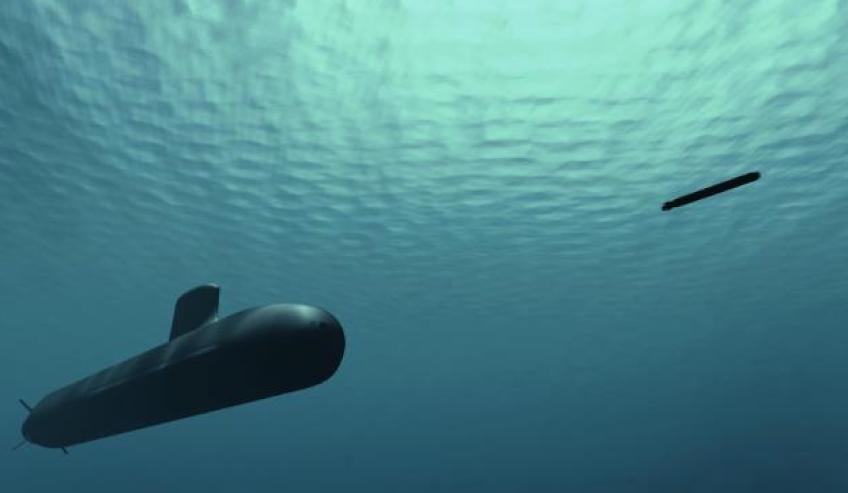Months on from the announcement of Australia’s $50 billion Future Submarine Project and the former Naval Group Australia CEO’s promise of a 90 per cent local industry figure, the government is still unable to provide an official number.
At a press conference in Sydney for Australia-United Kingdom Ministerial Consultations, Minister for Defence Industry Christopher Pyne was unable to provide media with an official or estimated figure of local industry content for the mammoth project.
"I'm not one for setting a percentage figure because I think that that's a rather asinine pastime," said Minister Pyne, despite previously talking up an expected figure of 90 per cent.
"My job is to increase as much as possible the spend on defence industry here in Australia that is capable of being part of any of these projects."
Former Naval Group Australia chief executive Sean Costello's promises of a 90 per cent local industry figure have created a frenzy, with the interim CEO Brent Clark retreating from this figure.
"I think, not trying to put words into people's mouths, what my predecessor was talking about when he mentioned the 90 per cent figure, he was talking about production, and I think that got lost in translation," Clark told Defence Connect in June this year.
"He was basically trying to explain that in terms of production of the submarine, the pressure hulls, putting all the steel, and systems and wires and all that stuff into the submarine, that would achieve a very high percentage of Australian industry involvement, that's what he was talking about.
"I don't think he was ever saying that there would be 90 per cent total industry involvement."
Federal politicians have criticised the Turnbull government for the lack of clarity on this issue, amid fears that the percentage could fall as low as 60 per cent.
"Sixty per cent falls well short of the 70 per cent achieved during the build of Collins and the 90 per cent promised for the Future Submarine Program by Minister Pyne on Q&A last year and by DCNS before a parliamentary committee in March this year," said Senator Nick Xenophon after a Senate hearing into the project in June.
"Let's hope it doesn't turn into an Ikea project, where all we do is bolt together a bunch of components that have been shipped to Australia from overseas."
Meanwhile, South Australia's Defence Teaming Centre (DTC) and Western Australia's Henderson Alliance have joined forces to push for a new way of thinking about, and maximising, Australia's capabilities on the naval shipbuilding project.
DTC's CEO Margot Forster told Defence Connect that, while there has been some positive moves to come out of this percentage debate, like the collaboration of SA's, WA's and Victoria's ministers, the debate itself must change.
"Firstly, we the DTC and Henderson Alliance commend the state governments involved for setting aside competition and collaborating to submit a joint position on Australian industry content," said Forster.
"We need to see more of this kind of behaviour. Naval shipbuilding is a national endeavour and will require a national solution if we are to successfully deliver these programs in Australia with maximum Australian industry involvement.
"However, we have concerns about setting a minimum benchmark of 60 per cent Australian industry involvement in the SEA 1000 Future Submarine Program."
Forster has questioned what value, if any, there is in placing minimum percentages on projects such as these if there is no incentive for the primes contracted to do the work.
"What would be the incentive for either Naval Group or Lockheed Martin to exceed this? Setting a minimum can only be successful if the contract offers incentives such as a financial bonus for exceeding that percentage and the bonus increases for every percentage the prime defence contractor delivers above the minimum requirement," she said.
And this is where the DTC and Henderson Alliance have agreed that there must be a shift across government and industry if the mammoth investment is to be truly successful in establishing and developing sovereign naval capabilities for Australia.
"Most importantly, we need to change the rhetoric around flat percentages, whether that be 90 per cent or even 60 per cent Australian industry content," said Forster.
"We must focus the discussion on Australian sovereign capability. That is the end game here. When we ask for percentages, what are we asking for? A percentage of the components? A percentage of the value of the contract? And at what stage in the build should we expect the 90 per cent be achieved?
"We must focus on ensuring that the contract between the Commonwealth and Naval Group includes a clear and transparent plan as to how and when the knowledge and skills to build, sustain and upgrade the Future Submarine will be transferred to Australians. We should all know what the timeline is and there should be incentives for Naval Group to achieve the target early and penalties if they delay the transfer of this sovereign capability."
Ikad Engineering and the Henderson Alliance's Darryl Hockey has also stressed that there needs to be more collaboration across industry and government to avoid losing out on high-tech work and the transfer of skills that Australia needs to be a strong player in the defence export market.
"What we must avoid is the high volume, low technology work being given to Australian industry and the major high-tech components being retained with overseas suppliers," Hockey said.
"This might meet some superficial percentage of AIC, but it will not develop sovereign capability in Australia nor will it ensure a high-tech advanced manufacturing future for Australia with the capacity to export."
Naval Group will design and construct 12 Future Submarines for Australia. Construction of the 12 submarines will begin in 2021-22.
The first of the 12 submarines is likely to begin entering service in the early 2030s. Construction will extend into the late 2040s to 2050 timeframe.



